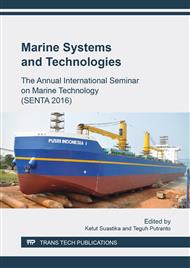p.37
p.44
p.53
p.64
p.71
p.81
p.88
p.96
p.105
On Offshore Engineering Rules for Designing Floating Structure of Tidal Current Energy Conversion System
Abstract:
Offshore engineering rules have been important part in supporting industrial development of tidal current energy conversion (TCEC) systems. The rules have been considered as guidelines for design of fixed type of TCEC systems, particularly those provided by European Marine Energy Centre (EMEC). However, for floating type of TCEC system, this is not the case. In fact, floating systems have a potential application for particular area of interests, for example in the area with strong currents at the seawater surface or in that with minimal infrastructure for installation support. In future, floating TCEC systems might be installed at the offshore area, even though the current application is commonly at the nearshore. Therefore, it may be beneficial to adopt relevant aspects of the offshore engineering rules for the floating structure design to support TCEC systems. This paper identifies elemental rules which may be suitable for application in the design of this type of floating structure. It includes choice of configurations, dynamic response analysis, material selection, mooring-water depth analyses and removal. This work is an important part of the whole big effort in supporting the development of ocean renewable energy industries.
Info:
Periodical:
Pages:
71-77
Citation:
Online since:
January 2018
Authors:
Price:
Сopyright:
© 2018 Trans Tech Publications Ltd. All Rights Reserved
Share:
Citation:


